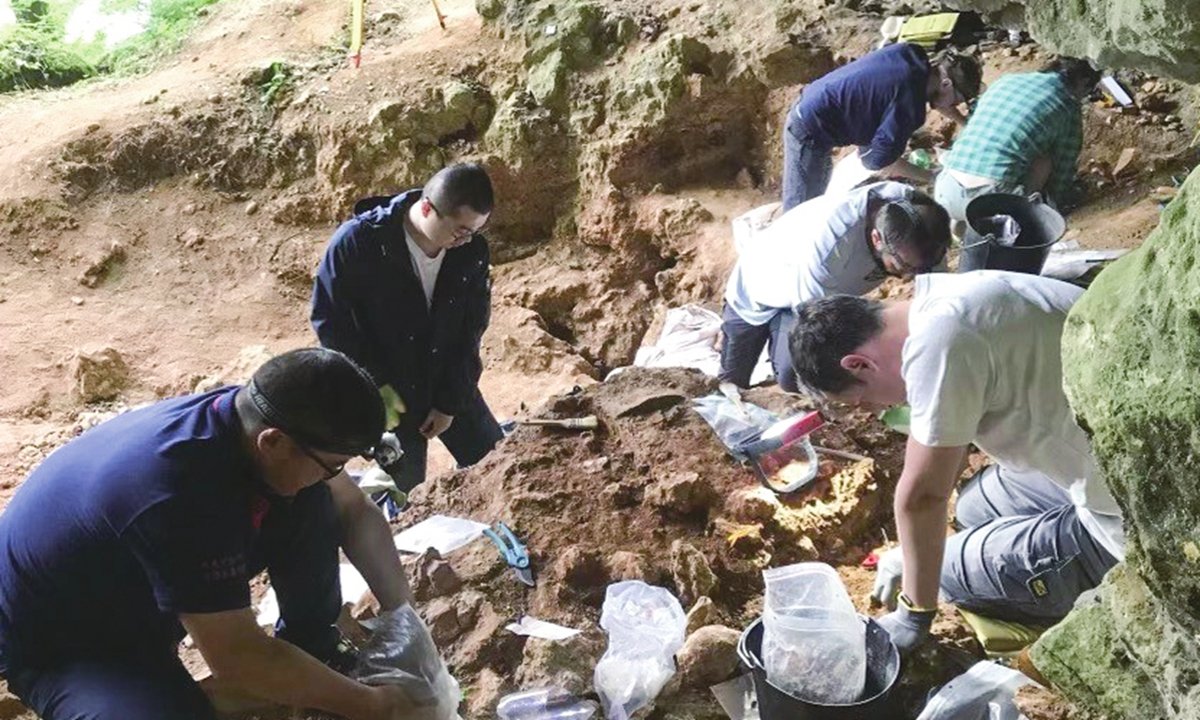In the realm of Stanley Kubrick‘s cinematic vision, we see the humble beginnings of advanced human society originating from a primitive discovery. This intriguing depiction becomes particularly relevant today, as modern archaeological studies continually unveil the profound depths of human history.
In France’s Dordogne Province, a tiny discovery with massive implications recently came to light. A mere two-centimeter human distal phalanx fossil was unearthed through a joint venture between Chinese and French archaeologists. This diminutive relic serves as a poignant reminder of our historical roots. Luc Doyon, a critical member of this collaborative effort, emphasized to the Global Times the immense significance of cross-cultural research in unraveling the tapestry of humanity’s past.
Doyon and his team excavated the human phalanx fossil from a rock shelter in the southern French town of Tourtoirac. This site, dating back 80,000 to 14,000 years ago, was initially occupied by Neanderthals, an extinct Eurasian species, before Homo sapiens, or modern humans, took over and transformed it into a hunting camp. The team’s discovery of traces of both species at the site has given researchers a unique opportunity to compare the living patterns of the two species and to further their understanding of human evolution.
In addition to the recently discovered fossil, the site has yielded an array of fascinating artifacts, including a pierced fox canine tooth, which Doyon suggests might have been part of a necklace crafted 27,000 years ago. This tooth, along with a milk tooth fossil, serves as a poignant testament to the timeless human quest for beauty and wisdom.
The multi-year excavation, which started in 2016 and concluded in mid-June, led to the discovery of an astonishing 40,000 objects. Besides the human and Neanderthal finger bones, stone tools and artworks are two other major types of discoveries made at the site. The cross-cultural research group was predominantly comprised of experts from Shandong University (SDU) in China and the University of Bordeaux in France.
Despite the hurdles posed by the COVID-19 pandemic, Chinese experts finally managed to join the on-site excavation in France this year. Doyon also underlined the vital role the French administration played in approving the project and facilitating the cross-cultural collaboration.
This archaeological endeavor marked the first Paleolithic collaboration in the 59-year-long diplomatic relationship between China and France. Chinese archaeologists have been able to gain international experience and understand more about Western archaeological practices through this partnership, while France has had the opportunity to uncover and better preserve valuable local relics.
One of the pressing issues for both countries has been the illegal excavation of archaeological sites, leading to the loss of invaluable relics. “Systematic scientific intervention” is the only effective way to minimize such losses, according to archaeologist Xiang Xin.
Looking beyond regional history and considering how each site contributes to a global understanding of humanity is an integral part of paleontology and archaeology, Xiang adds. Doyon echoes this sentiment, emphasizing the importance of cross-cultural projects.
Past collaborations between China and France, such as the Chinese archaeologists’ investigation of an underwater site along the Mediterranean coast of France in 2015 and various cultural heritage protection initiatives, exemplify their shared dedication to cultural cooperation.
As China and France prepare to celebrate the 60th anniversary of their diplomatic ties in 2024, these archaeological collaborations underscore their commitment to furthering the global dialogue on civilization and deepening our understanding of humanity, beyond temporary political gains.
READ MORE:
